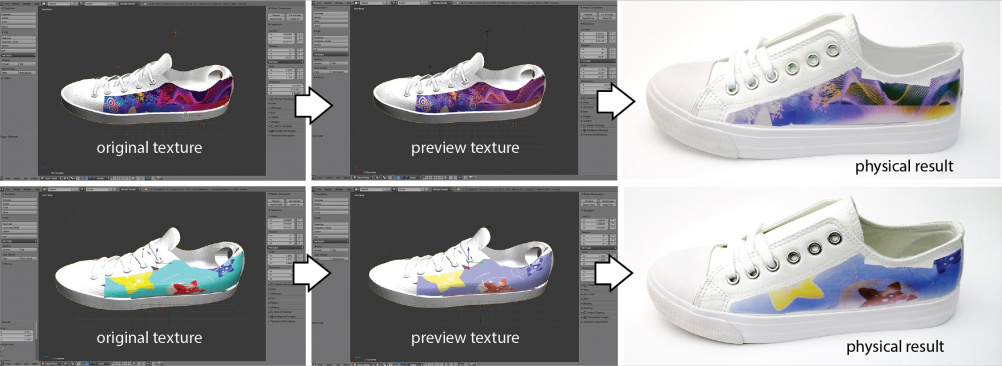Dubbed PhotoChromeleon, the system is said to use a mix of photochromic dyes that can be sprayed or painted onto the surface of any object to change its colour, a fully reversible process that can be repeated infinitely.
PhotoChromeleon can be used to customise any object and the colour remains, even when used in natural environments.
“This special type of dye could enable a whole myriad of customisation options that could improve manufacturing efficiency and reduce overall waste,” said CSAIL postdoc Yuhua Jin, the lead author on a new paper about the project. “Users could personalise their belongings and appearance on a daily basis, without the need to buy the same object multiple times in different colours and styles.”
Cambridge team creates “chameleon” skin
Chameleon-like material promises colour-shifting films for camouflage and displays
PhotoChromeleon reportedly builds on the team’s previous system, “ColorMod,” which uses a 3D printer to fabricate items that can change their colour. Frustrated by some of the limitations of this project, such as small colour scheme and low-resolution results, the team decided to investigate potential updates.
With ColorMod, each pixel on an object needed to be printed, so the resolution was grainy. Furthermore, each pixel of the object could only have two states: transparent and its own colour. So, a blue dye could only go from blue to transparent when activated, and a yellow dye could only show yellow. With PhotoChromeleon’s ink, users can create anything from a zebra pattern to a sweeping landscape, to multicoloured fire flames, with a larger range of colours.
The team created the ink by mixing cyan, magenta, and yellow (CMY) photochromic dyes into a single sprayable solution, eliminating the need to 3D print individual pixels. By understanding how each dye interacts with different wavelengths, the team was able to control each colour channel through activating and deactivating with the corresponding light sources.
Specifically, they used three different lights with different wavelengths to eliminate each primary colour separately. For example, if they used a blue light, it would mostly be absorbed by the yellow dye and be deactivated, and magenta and cyan would remain, resulting in blue. When using a green light, magenta would mostly absorb it and be deactivated, and then both yellow and cyan would remain, leaving green.

After coating an object using the solution, the user places the object inside a box with a projector and UV light. The UV light saturates the colours from transparent to full saturation, and the projector desaturates the colours as needed. Once the light has activated the colours, the new pattern appears. If the user isn’t satisfied with the design then UV light can be used to erase it before starting again.
According to CASIL, the team also developed a user interface to automatically process designs and patterns that go onto desired items. The user can load up their blueprint, and the program generates the mapping onto the object before the light renders the scene.
The team tested the system on a car model, a phone case, a shoe, and a toy chameleon. Depending on the shape and orientation of the object, the process took anywhere from fifteen to forty minutes, and the patterns all had high resolutions and could be successfully erased when desired.
“By giving users the autonomy to individualise their items, countless resources could be preserved, and the opportunities to creatively change your favourite possessions are boundless,” said MIT professor Stefanie Mueller.
While PhotoChromeleon opens a much larger colour gamut, not all colours were represented in the photochromic dyes. For example, CSAIL said there was no great match for magenta or cyan, so the team had to estimate to the closest dye. They plan to expand on this by collaborating with material scientists to create improved dyes.




Nanogenerator consumes CO2 to generate electricity
Nice to see my my views being backed up by no less a figure than Sabine Hossenfelder https://youtu.be/QoJzs4fA4fo